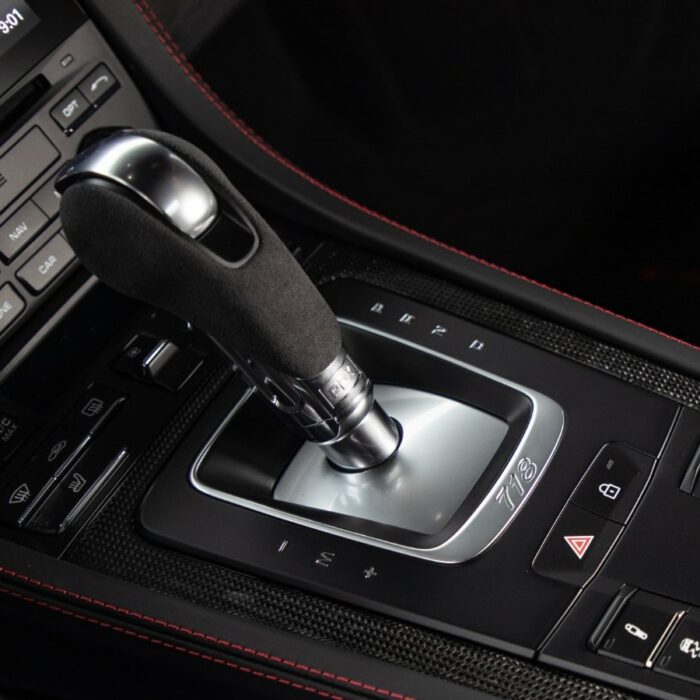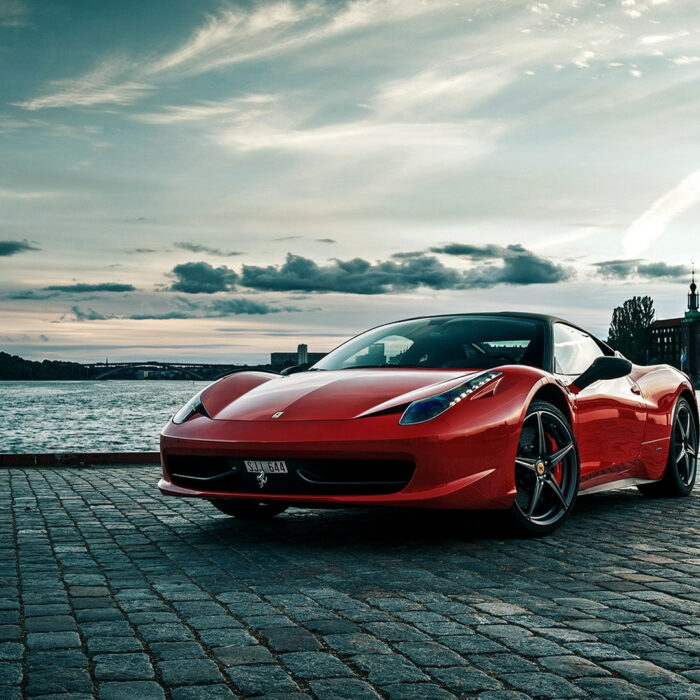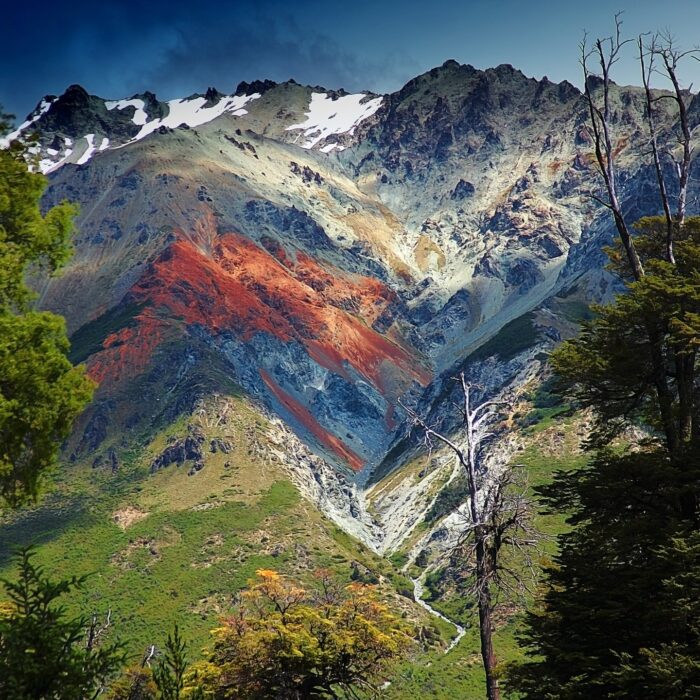Raw power, intense thrill, and an unrelenting surge – these are the vehicles that make the terrain wince. Dinosaurs that forgot their extinction, the Ford F-150 Raptor and Ram 1500 TRX. At first glance, they stand as direct rivals: imposing appearances, similar dimensions, and colossal wheels. Yet, the Ram costs a hefty 15 million rubles, while the Raptor is a relatively modest “only” 11 million. What’s the reasoning behind this price gap? And how much will the frugal pay in this scenario?
A special thanks to Ramtruck company for providing the vehicles for this review.
Are there actual owners of these vehicles here? Let’s be straightforward – you didn’t buy them to leap across sand dunes as the promotional videos depict. Nor did you acquire them to participate in the Baja 1000 races, which birthed these off-road sporty pickups. Stripped from their historical habitat, the main superpower of these giants is bragging rights. Nowadays, nobody would be astounded by the Mercedes-AMG G 63, but the Ram TRX is a whole other story. Everyone looks at it, everyone hears it, and it intimidates everyone. Right now, Ram is the shining star of parallel imports in this segment.

A true stunner, no doubt. You gaze upon it and get soaked in its spirit… Who mentioned “unrestrained freedom”? The spirit of liberty! Freedom to choose roads and directions, freedom while composing your packing list. If the 1.7-meter cargo bed falls short for you, you can hitch a four-ton house on wheels to the back! And then, there’s the freedom of self-expression with over a hundred branded accessories. Yet, even the test pickup in the Launch Edition version is already darn good.

But is Ford any less impressive? Its vertical front stands tall like the majestic fence of a lavish mansion (the surround-view cameras are family too). Massive 35-inch wheels – akin to the Ram’s, and the cargo bed, equally capacious, leaves a lasting impression. After all, the Raptor lowers and lifts its bed with an electric drive, and here, you can even find a step and a handle! On top of that, Ford can play the role of the world’s least efficient power generator, producing up to 2 kW of electricity on the side. However, considering its engine, it might be cheaper to burn family portraits off the walls.


Or maybe not?
After all, there’s no V8 engine here, replaced by downsizing – the V6 3.5 EcoBoost. Eco-friendly, fuel-efficient, which, in turn, doesn’t quite match the spirit and essence of this vehicle. Actually, this is precisely why the Raptor now boasts a V8 again. Ford grew tired of numerous third-party firms snatching their bread by installing Mustang engines under this colossal hood, so now they do it right at the factory. They even employ the supercharged version from the GT500 coupe. Imagine, this setup can deliver a whopping 710 hp! While this Raptor has an “R” in its name, ours doesn’t roar but rather delivers a “mere” 456 hp. Not too shabby, but considering its 2779 kg of loaded weight and its six-meter length, it’s more of a rational adequacy.
Especially when compared to the Ram and its astonishing 711 hp!

Let’s break it down. Seven hundred and eleven horsepower – after this, you won’t be surprised that the words “dyno” and “dinosaur” rhyme. This reffers not only to a bigger road tax (for more details about registering such vehicles, read below), but also a 4.5-second sprint to a hundred, and to top it off, it’s powered by the V8 Hemi with an unmistakable sound. I’m confident that the rhythm of the flashes from the 6.2 engine precisely mirrors the sound emitted by a tyrannosaurus after a hearty feast. Bur-bur-bur, it was one tasty gadrozaur. Even at idle, it becomes evident that this engine would suffice for any loaded weight, even if it equals infinity, just like in the case of the Ram. Throughout all my years at Autoreview, for the first time, I see a vehicle whose registration certificate reads “passenger pickup” and yet it’s still lacking in the eyes of our scales. Each of the four platforms is designed for 750 kg, but it appears there’s not enough up front. As a result, we weighed the TRX in two steps: first the rear axle, then we placed two platforms under each of the front wheels. And we got a grand total of 3043 kg. Ladies and gentlemen, we’re talking about a three-tonner here. No wonder three yellow lights denoting a truck train are integrated into the hood vent – it’s genuinely a heavyweight hauler. By the way, through the hood window, the engine receives half of the entire air volume, which then goes into a massive 29-liter air filter box. This is the largest replaceable element in the passenger car industry.


But come on, how is this a passenger vehicle? When I, with my 188 cm height, can barely reach the open hood; when Yaroslav Tsyplenkov is completely hidden from view behind the opposite side; and when our photographer, Dima Pitersky, circled the vehicle for seventeen kilometers during the interior shoot. You simply grab the door handle bar, step on the convenient foothold, and ascend to the second floor to get behind the wheel. From here, you literally look down on drivers of light commercial vehicles. And most importantly, the sensation of driving a truck doesn’t leave you even when you’re on the move. Thank goodness I have a Category C license.




Even though the interior of the Ram pleasantly surprised me with its “lightness.” Abundant leather and alcantara, premium plastics, and precise detailing on every button. Even the Tesla-esque monitor doesn’t evoke any negative sentiments. The menu on it is visually pleasing, and in this cavernous cabin (with armrest width reaching 1.65 meters!), it doesn’t strive to dominate, merely blending in as another interior element. Moreover, textured instruments with a broad color information display manage to capture more attention nonetheless.



The seating is excellent, the steering wheel adjusts within broad ranges, and if that isn’t enough for you, you can also adjust the pedals. Interestingly, the designers turned the massive lid of the central console into an aesthetic play, adorning it with mathematical formulas and compass markings. Inside its depths lies a rubber mat, bearing equal-scale images of the Ram TRX, the tyrannosaurus, and the velociraptor. The comparison clearly isn’t in favor of the latter. It’s fortunate that the velociraptor and the tyrannosaurus missed each other by at least a million years.


And then, there’s this engine and its accompanying eight-speed TorqueFlite 8HP95 transmission, both of which deserve a spot in the Rock and Roll Hall of Fame. It’s the Fender Stratocaster of the automotive world, allowing you to play any melody. You can melodiously sing a ballad at near-idle RPMs, or you can push down a couple of frets, or in this case, the “automatic” transmission friction packs, and hear the roar of a dinosaur from under the hood. When you press the gas pedal in the “ty-rex,” all the exhaust burbles are left somewhere behind, and you’re left with a unique compressor timbre. Yes, at first, it might seem like a poor cat got tangled in the drive belt, as the howl at certain RPMs transitions into a screech. But in our autoworld, we call it a song.

And it’s not just for show – 4.8 seconds for a 0-100 km/h sprint on wet asphalt. Despite not being able to employ the launch control system. It activated without a hitch, but right after I floored the gas pedal, the brakes couldn’t prevent the rear wheels from spinning. No traction means no inter-axle differential. Perhaps, this is also a surprise for you, but these vehicles’ all-wheel drive is implemented through a clutch that connects the front wheels.

However, even so, the Ram TRX has only slightly deviated from its passport data. And if you consider the results over the 402-meter distance, it indeed confirmed them. Yet, it’s strange that the electronic limiter interrupts the acceleration at 190 km/h – by this point, the “ty-rex” can’t even cover a kilometer from a standstill! And most importantly, even at this speed, the three-ton behemoth remains stable and obedient. You can even allow yourself to change lanes! The information on the steering wheel isn’t exactly abundant, but it’s sufficient for you to understand, during the first tense turn, that the Ram isn’t too prepared for such twists on asphalt. You can’t conceal the wide three-ton nature.

Suspension? Just look at these shock absorbers with a diameter as large as sewage pipes, from which additional hydraulic lines extend to auxiliary reservoirs. Alongside the rugged bodywork and added headlights, these anodized aluminum bodies are the main exterior highlights. Allow me to introduce: the Bilstein Black Hawk e2 in Ram’s wheel arch and the Fox Racing Shox in Ford’s. The diameter of the bodies of both exceeds 60 mm, and the rebound travel seems infinite. Desperate to perform a wheel hanging in natural conditions at the proving ground, I resorted to the help of a tow truck. Alternately loading the pickups onto the platform with one side, I discovered that Ford, up until the moment of lift-off, lowers the wheel by 342 mm, and Ram – by 293 mm. For comparison: the Land Cruiser 300, which practically has no rivals among conventional vehicles in terms of off-road capability, provides 231 mm of rebound travel.

And how convenient it is to observe the frames from this position! They’re original in these versions. Extensive use of high-strength steels, additional reinforcements, special components like brackets for mounting those external tanks. Mighty front double wishbones with aluminum components and one and a half meter longitudinal arms holding the rear axle. Incidentally, it doesn’t rest on leaf springs but rather coil springs, and on Ram, in addition to the upper differential housing point, there’s an attached shock absorber aimed at dampening torsional vibrations. The Dana 60 TRX axle is borrowed from the heavy Ram 2500 series. But the internals are still upgraded. Just look at the thickness of the driveshafts or the propeller shaft – this aluminum tube more resembles a storm drain shaft. Oddly, of course, in this arrangement, there’s an empty space where the inter-axle differential should be. How do these clutches endure the 700-900 Nm of torque?

Perhaps, akin to how we bear the jolting of the Ram now – gritting our teeth. Hey, steroid-fueled ram, remember, this is a dynamometer road on a proving ground, and in Russia, it’s considered smooth. Irony aside, the assembly lines for both pickups are located in Michigan – could it be there are no joints in the roads? The constant internal tremor on sharp bumps, the relentless shaking, powerful jolts – especially in the rear seat.


Maybe more suspension travel is needed? Then indeed, some of the issues fade, but the Ram TRX swallows unevenness along with you. You might want to fasten five-point seatbelts, have an easy breakfast, and speed across intricate terrains, like I did a few years ago behind the wheel of a Mitsubishi Triton prototype at a rally raid in Kalmykia. However, enduring shaking in the Spartan interior of a sports car is something I’m ready for, but why would I want this on the road, and for 15 million rubles?

Moreover, rally raid prototypes are considerably lighter, and steering them on winding snowy roads is pure delight. Here, however, the inertia is capitalized with a capital “I,” and the stability control system algorithm is mysterious. Turned it off by holding the button, put the TRX into a slide, then eased off the gas to temper the strong impulse – and right at that moment, the electronics promptly intervene and activate the brakes. Even in the most exhilarating chassis mode named Baja, the “Ram” doesn’t turn into the king of drifting. And in the most off-road-focused mode called Mud, it doesn’t transform into a “mudder” in our conventional understanding, i.e., on loose grounds. The moment you slightly reduce speed in deep snow, a strong tow is at your service.


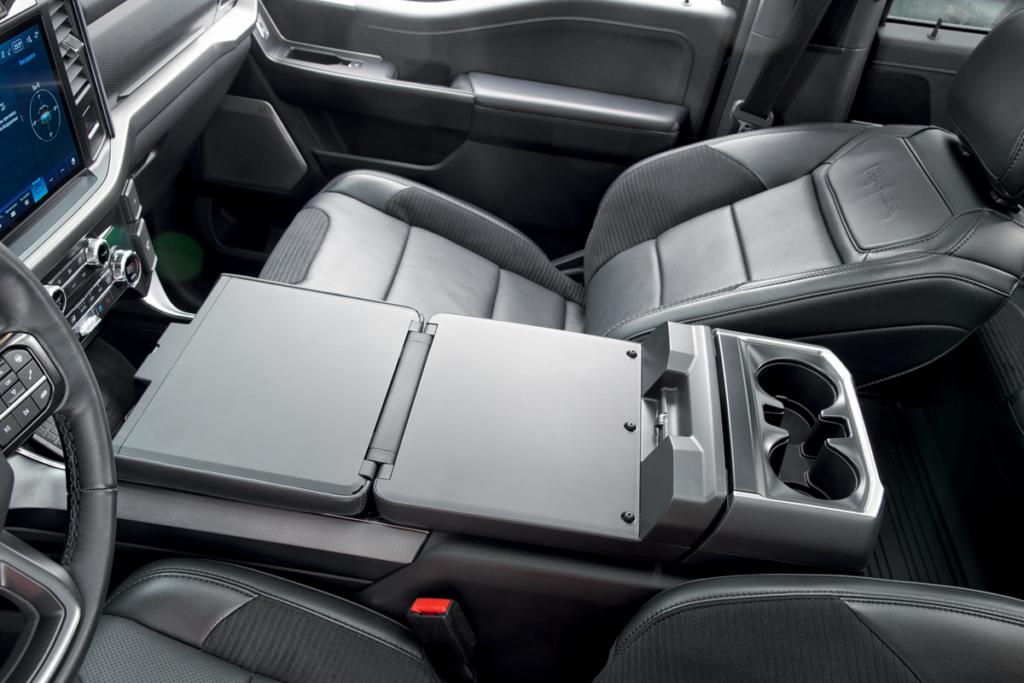
The relatively lighter Ford, however, is more lively in these conditions, and it drifts masterfully. Turn the wheel inside, hit the gas, and off you go. And what impressive angles are achieved during sequential gear shifts on a straight road! Yet, this is perhaps the only moment when the Raptor genuinely lifted my spirits.
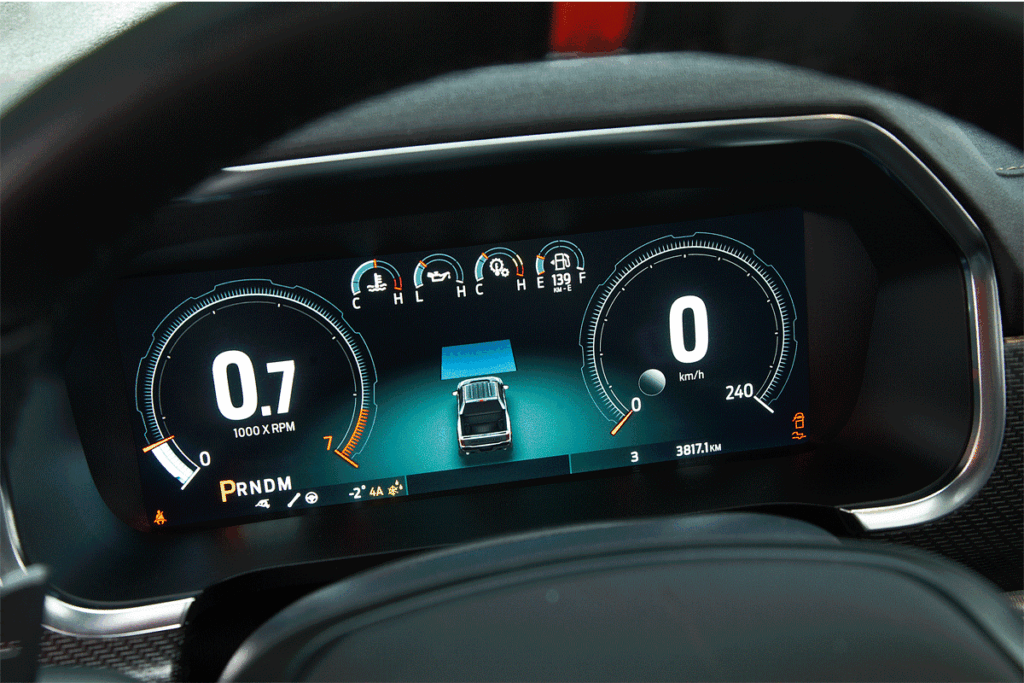

Starting with the fact that its interior is much simpler. Plastic handles have play, the electric drive that stows the “automatic” lever flush with the tunnel jams. The seat here is more basic, the instruments duller, and the interface of the Sync infotainment system is puzzling.



Parallel starts with the Ram quickly turned into sequential ones. While there, you need to tame excessive wheel spin; here, just keep the right pedal floored, and in 6.5 seconds, you’ll see 100 km/h. And after half a minute, the Ford will reach its top speed, which is limited to the same 190 km/h as the “ty-rex.” But if there you might regret this, here, you rejoice. Because long ago, approximately from the 110 km/h mark on the speedometer, it becomes uncomfortable and frightening – Ford handles triple-digit speeds extremely poorly. It becomes heavy in a fairly wide zone around zero, then suddenly lightens – all this under sluggish responses. I understand that the Predator’s chassis was tuned for rough terrain, but even rally buggies with soft, long-travel suspensions behave more decently.
| Parametrs | Ford F-150 Raptor | Ram 1500 TRX |
| Max. speed km/h | 188,8* | 190,1* |
| Acceleration time, s 0—60 km/h 0—100 km/h 0—150 km/h on 400m distance on 1000m distance | 2,8 6,5 15 14,2 27 | 2,4 4,8 11,1 13 24,5** |
** On top speed limiter

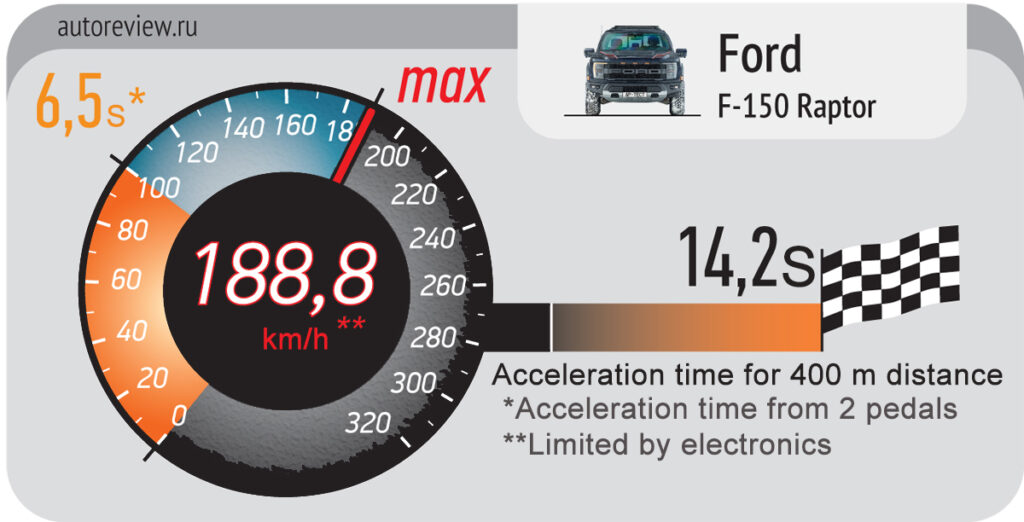
True, you can soften the Ford a bit, and then it’s capable of letting through a part of minor bumps without vehemently wanting to rip your spleen out. But its sound insulation is undoubtedly better. The engine is barely audible inside the cabin, despite all the intricacies of the four-mode exhaust system, which includes a so-called trombone loop. Make sure to look at this construction – engineers resort to all sorts of tricks when they lose a V8. On the other hand, on a cold morning, you can start the Raptor in a way that won’t wake up the neighbors in your cottage community, while the Ram will wake up the whole neighborhood.
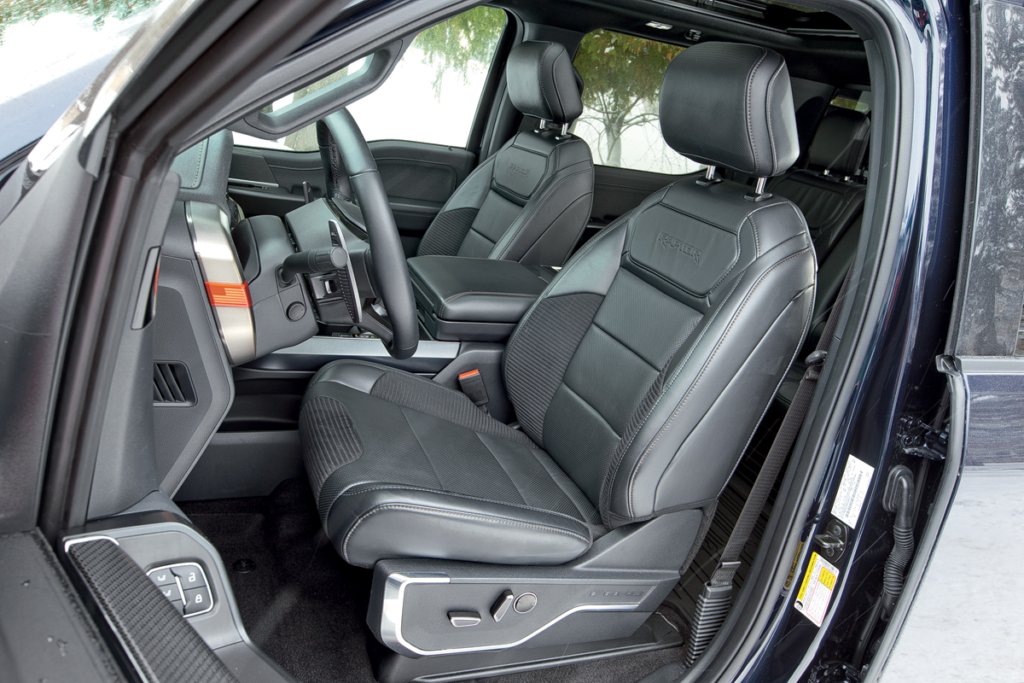
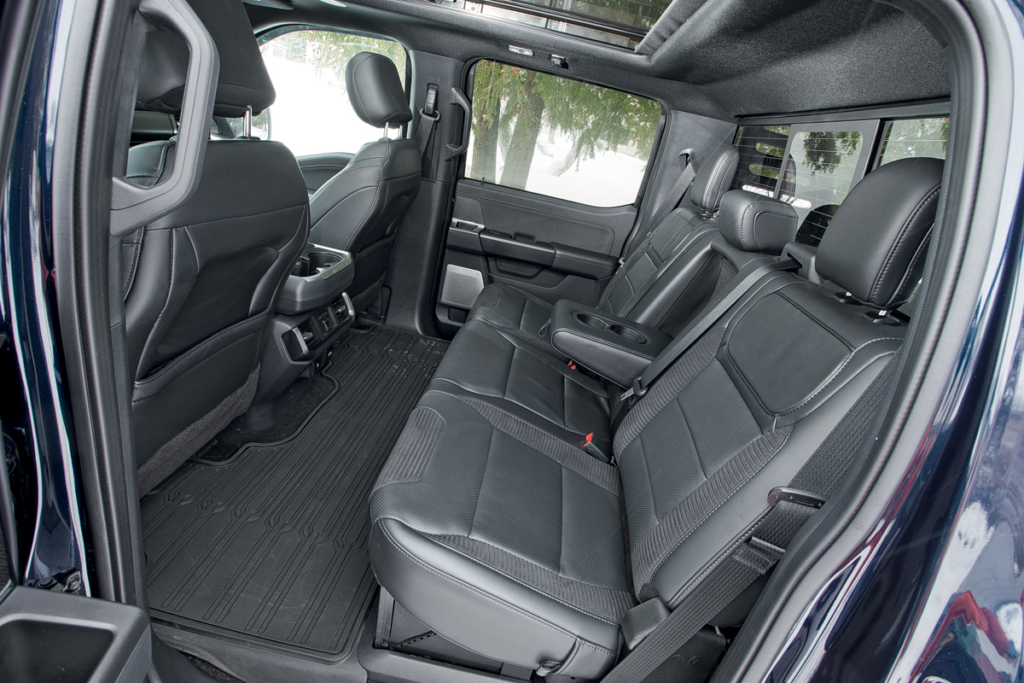
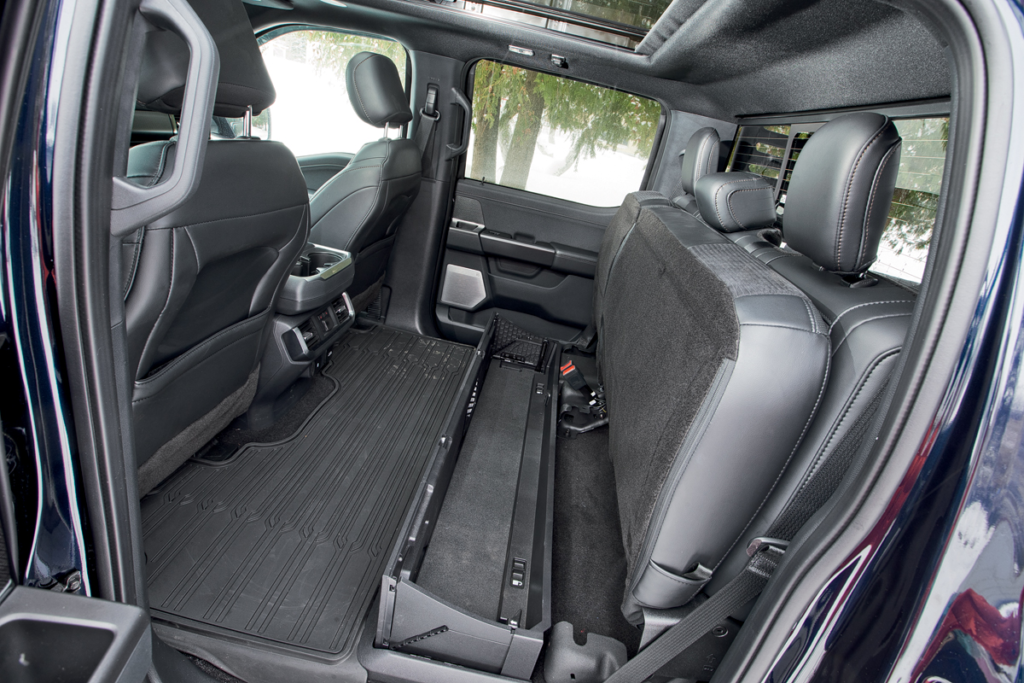
Only first, ask yourself the question: “Why should I start it at all?” Yes, Ford can drift well, but almost any all-wheel-drive passenger car can do this at least as well. Enjoying the unyielding energy-intensive suspension? But it’s already knocking with less than 30,000 kilometers on the odometer. Delighting in a 6.5-second acceleration to “a hundred” with the problematic EcoBoost engine?
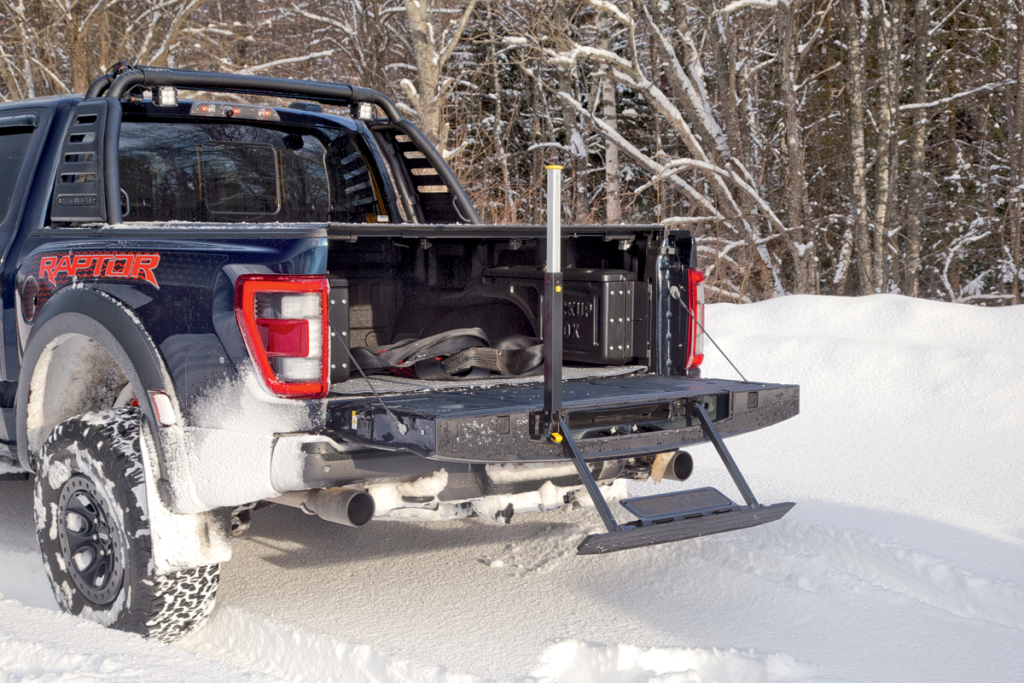

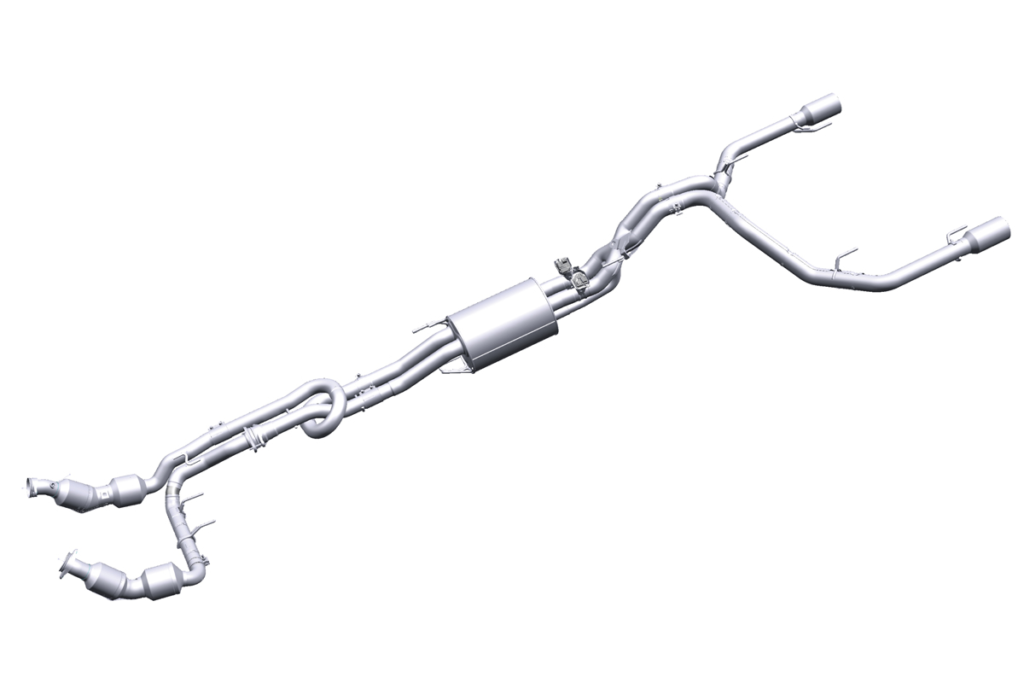
Honestly, the Ford F-150 Raptor seemed to me one of the strangest and most unreasonable ways to spend 11 million on a car for a good mood. If you absolutely need an American SUV with charisma, the Jeep Wrangler 392 looks much more appealing. It has a V8, astonishing dynamics, impressive off-road capability, and reasonable dimensions.
So, does it come out that spending 15 million on a Ram 1500 TRX is an even stranger purchase? Well, not really.

However, in isolation from their natural habitat, it offers different values – those same show-offs. And also, a genuinely impressive engine. Those are the emotions that are priceless. True, whenever I recall that shaking after lunch… Did I say that all these emotions are positive?
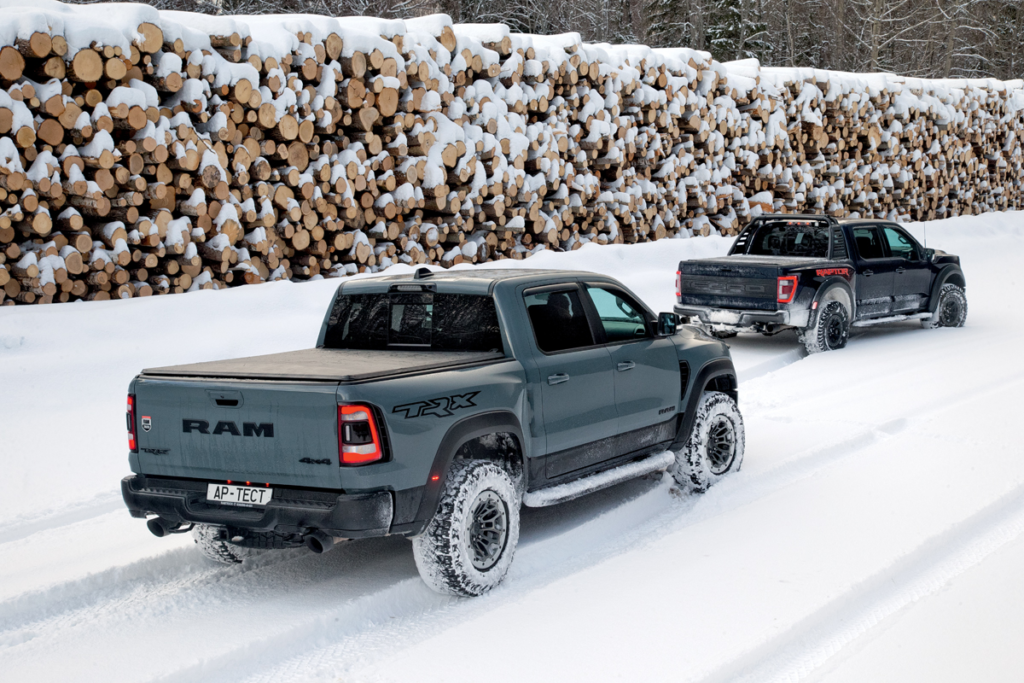
SUVs or Trucks?
Both the Ram and the Raptor are categorized as “Light Pickup Trucks” in the “Vehicle Type” column, imported as regular passenger vehicles to avoid freight restrictions, which is particularly relevant in Moscow. With a total mass of 3243 kg, you can drive the Raptor with a Category B driver’s license, while the loaded Ram, weighing 3546 kg, requires a Category C license to operate.
However, in the capital city, the owner of a 450-horsepower Raptor-passenger truck must pay an annual transport tax of 67,500 rubles, while for the 704-horsepower Ram, it’s a staggering 105,000 rubles. But what if these pickups were registered as trucks? In this case, the tax for the Raptor would be 31,500 rubles, and for the Ram, just under 50,000. However, a Raptor registered as a truck can’t travel in the left lane on roads with three or more lanes and is subject to certain parking restrictions. In Moscow, there’s the so-called “freight framework” – a network of streets where trucks with a total weight of over 2.5 tons are prohibited from exiting without a substantial reason. A nuance – control over this has been delegated to “analog” traffic police crews, who, for the most part, turn a blind eye to this violation.
However, while the Raptor, even with its cargo registration, barely touches 3.5 tons, it allows for relatively unrestricted movement in Moscow. On the other hand, for Russian legislation, the Ram is akin to an ordinary KAMAZ truck. The prohibitions against driving and parking on roads labeled with “freight” signs apply to it, and additional, sometimes unexpected, restrictions arise regionally. Moreover, within Moscow, driving a vehicle like the Ram, weighing over 3.5 tons, is prohibited without a special permit – otherwise, a separate fine of 5000 rubles per camera on the way will accrue. To obtain this permit, one must register in the capital’s RIS control system, install a tachograph, define specific routes for travel, and much more. Completing these procedures for free is practically impossible, and going through commercial firms for the registration process might even cost more than the “passenger” transport tax rate.
Interestingly, both pickups’ load capacities, according to documents, just barely cross the 500 kg threshold – even with cargo registration, they can freely enter central Moscow. However, while this is still relevant for the Raptor as a cargo truck, the Ram is excluded due to its overall weight. The conclusion is that registering such vehicles as cargo in customs is only viable if they are operated in rural areas!

Cargo Compartments
The sizes of the cargo beds are quite close. Take note of the hitch platform in the Ram’s bed. Both pickups can tow trailers weighing up to 3700 kg.
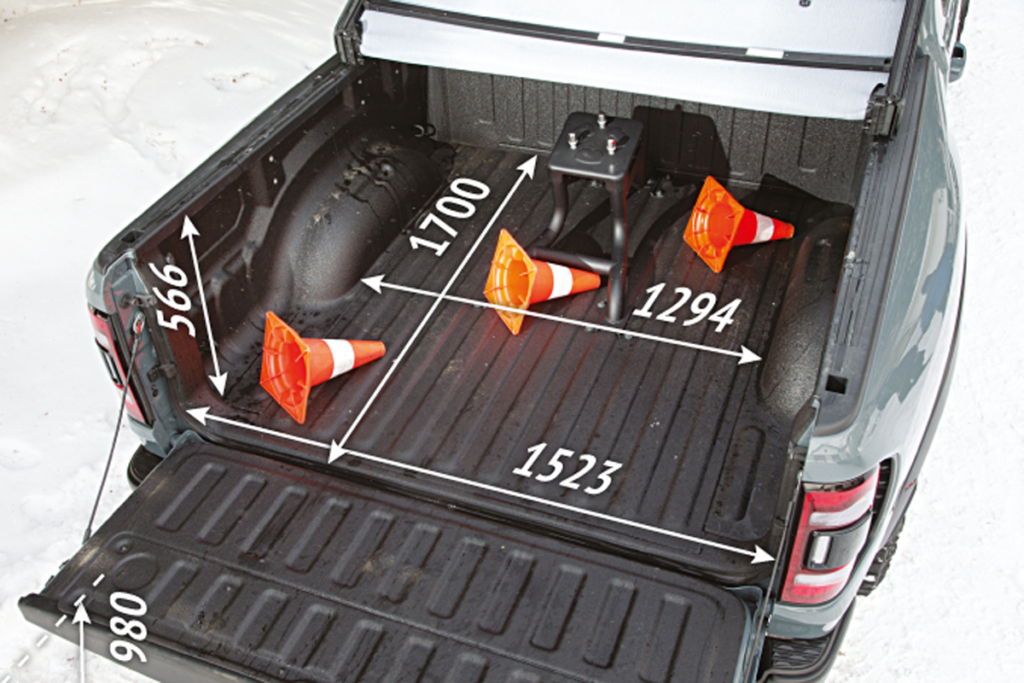

Dimensions, weight and weight distribution along the axes
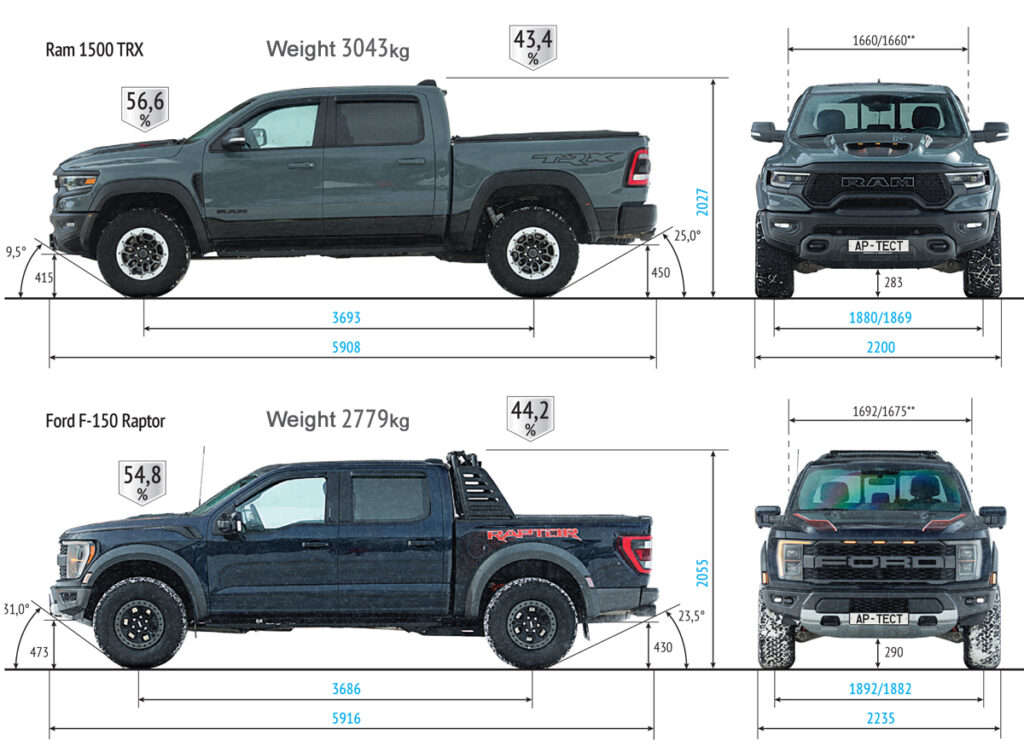
*Actual vehicle weight without driver, with full fuel tank and full process fluids
**For right rear seat
**Interior width at shoulder level in the first/second row of seats.
| Parametr | Ford F-150 Raptor | Ram 1500 TRX |
| Body Type | four-door pickup | four-door pickup |
| Seating Capacity | 5 | 5 |
| Ground Clearance, mm | 305 | 300 |
| Departure/Approach Angle, degrees | 31,0/23,9 | 30,2/23,5 |
| Ramp Angle, degrees | 22,7 | 21,9 |
| Curb Weight, kg | 2604 | 2880 |
| Gross Vehicle Weight, kg | 3243 | 3538 |
| Trailer Weight Capacity, kg | 3720 | 3674 |
| Engine | Gasoline, with combined injection and biturbocharging | Gasoline, with distributed injection and a supercharger |
| Placement | Front-engine, longitudinal | Front-engine, longitudinal |
| Number and Arrangement of Cylinders⠀ | 6-cylinder, V-shaped | 8-cylinder, V-shaped |
| Displacement, cc | 3496 | 6166 |
| Cylinder Diameter / Piston Stroke, mm⠀ | 92,5/86,6 | 103,9/90,9 |
| Compression Ratio | 10,5:1 | 9,5:1 |
| Number of Valves | 24 | 16 |
| Max Power Output, hp/kW/rpm | 456/336/5850 | 711/523/6100 |
| Max Torque, Nm/rpm | 691/3000 | 882/4800 |
| Transmission | automatic, 10-speed | automatic, 8-speed |
| Drive Type | full, with a multi-disc clutch front-wheel drive | full, with a multi-disc clutch front-wheel drive |
| Rear Differential | with forced lock | with forced lock |
| Low Range | 2,64:1 | 2,64:1 |
| Front Suspension | independent, spring, on double transverse arms | independent, spring, on double transverse arms |
| Rear Suspension | dependent, spring | dependent, spring |
| Front Brakes / Disc Diameter, mm | disc, ventilated/350 | disc, ventilated/378 |
| Front Brake Mechanism | 2-piston, with floating caliper | 2-piston, with floating caliper |
| Rear Brakes / Disc Diameter, mm | disc, ventilated/336 | disc, ventilated/375 |
| Rear Brake Mechanism | 1-piston, with floating caliper | 1-piston, with floating caliper |
| Tire Dimensions | 315/70 R17 | 325/65 R18 |
| Maximum Speed, km/h | n.d. | n.d. |
| 0-97 km/h Acceleration Time, s | n.d. | 4,5 |
| Fuel Consumption, l/100 km Urban Cycle Extra-Urban Cycle Combined Cycle | 16,8 13,1 15,7 | 23,5 16,8 21,4 |
| Fuel Tank Capacity, l | 136 | 125 |
Clash of Ancient Beasts
Petr Gribachev, Photos from Manufacturer Companies
Raptors and tyrannosaurs never crossed paths in nature: the former inhabited the Earth around 71 million years ago, while the latter emerged a million years later. Against the backdrop of modern hybrids and electric vehicles, the Ford Raptor and Ram TRX are the same dinosaurs. However, they won’t face extinction, and the interweaving of their historical paths deserves a separate narrative.
Private individuals and small companies began constructing utility vehicles with cargo platforms based on the iconic Ford Model T almost immediately after its introduction in 1908. The first serial Ford TT truck, derived from it, appeared in 1917 and was only offered as a chassis. Meanwhile, Dodge, a year later, built a full-fledged machine with a 35-horsepower engine and a body capable of carrying half a ton of cargo. Only in 1925, just a couple of years before the end of production, did it finally receive a conveyor version with its own cargo bed, known as the “T Pickup.”
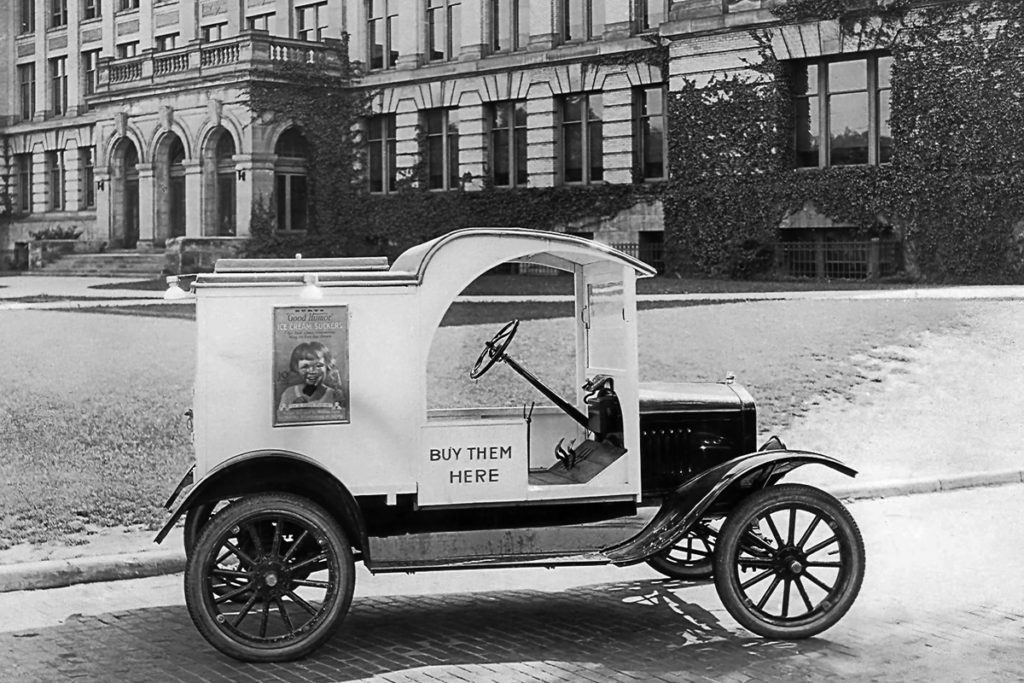
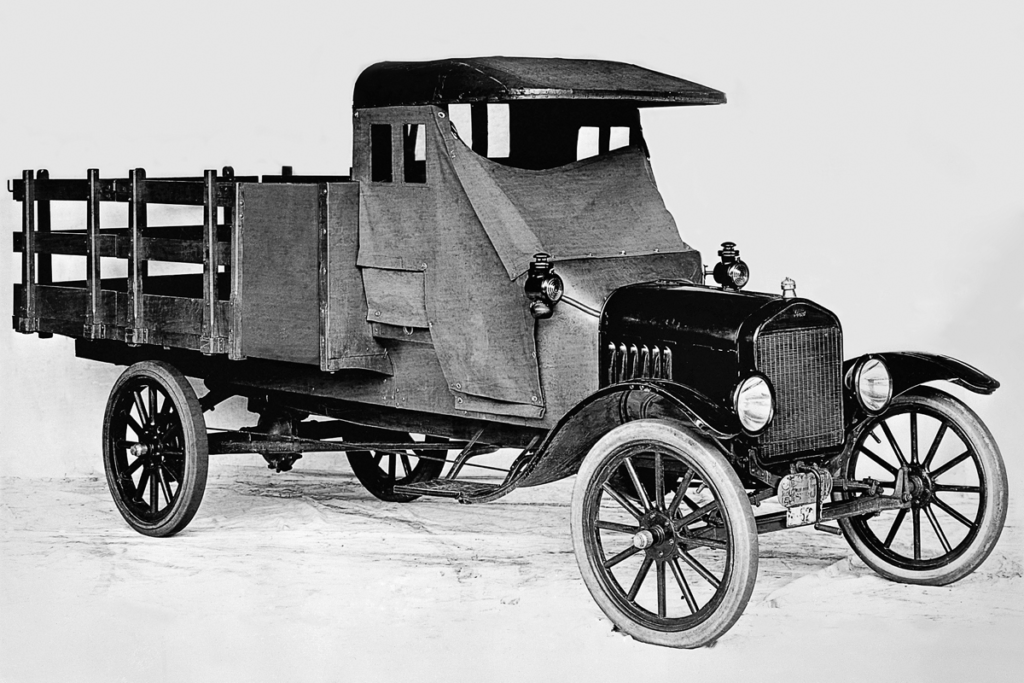
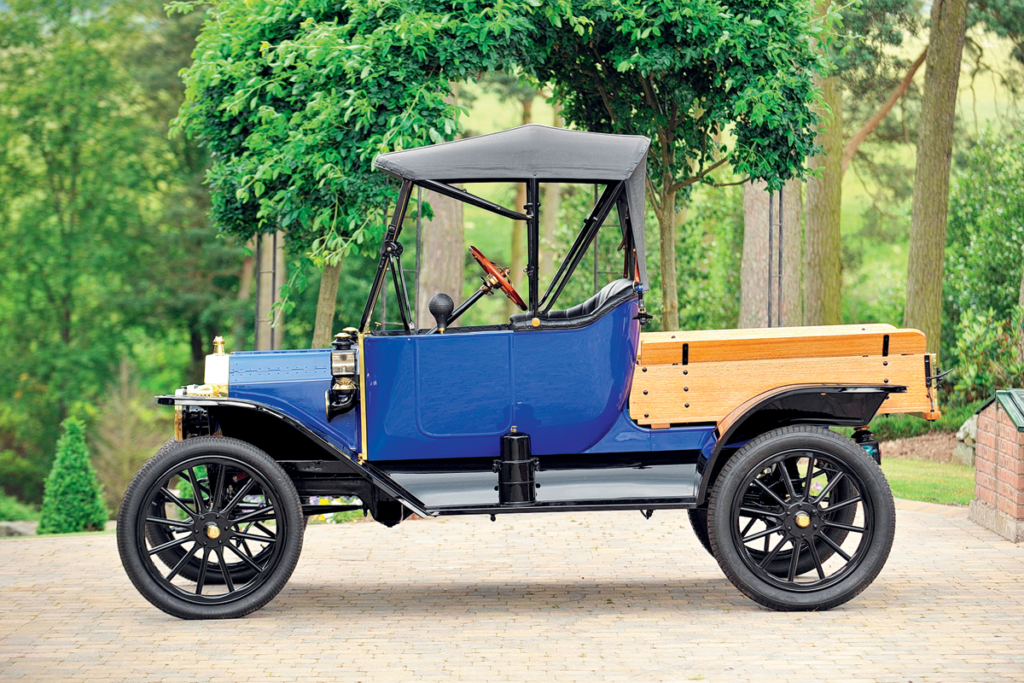

After this, both Ford and Dodge didn’t stop making pickups – cargo versions of their current car models with reinforced suspensions. In 1948, for instance, Ford introduced the F-1 pickup with its original wavy design and a 100-horsepower V8 engine. Since then, pickups in their lineup underwent generational changes roughly every ten years, adding modifications along the way (for instance, in the third generation, they introduced all-wheel drive). With the appearance of the F-1, the letter “F” and a subsequent number became a staple in the names of all Ford commercial vehicles, with the letter signifying Ford and the number indicating the load capacity: 1 – 500 kg, 2 and 3 – 750 kg, 4 and 5 – a ton, 6 – two tons, 7 and 8 – three tons. However, by the end of the fifties, the number of models and modifications increased, leading to a change in this numbering system. Eventually, the lightest pickup was labeled as F-100 (later becoming F-150 starting from the sixth generation), and heavier models were named F-250, F-350, and so on.

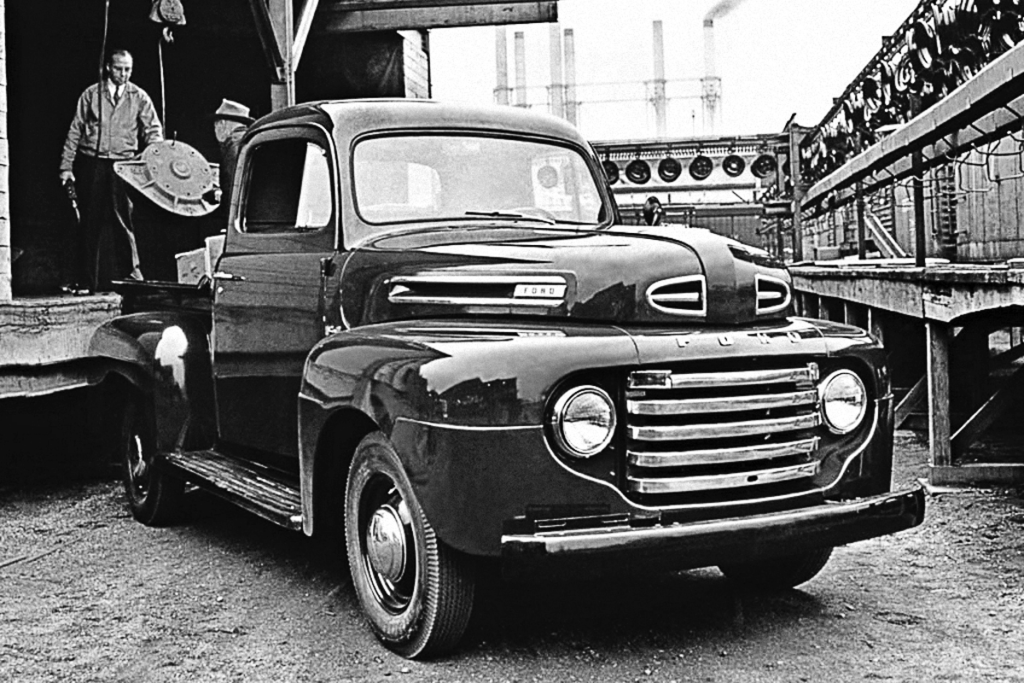
Dodge’s vision was different. During the war, the company actively produced vehicles for the Lend-Lease program: the same all-wheel-drive Weapons Carriers (WC) were supplied to countries including the USSR. However, in the late forties, the US Army was equipped with such trucks, and deliveries to other countries almost ceased – leaving behind a surplus of unclaimed parts. Consequently, Dodge decided to enter the market of civilian utility vehicles, or more precisely, to create it.

This led to the creation of the monstrous Power Wagon pickup – the name was chosen based on a driver’s magazine. The basis was the same WC components, but the chassis was extended to 3.4 meters, and a steel body from a 1942 pickup was mounted on it. The cab remained the same, with the only change being the replacement of the angular front grille with a rounded one – borrowed from the Dodge T234 truck for the Chinese market. The engine remained standard (with a displacement of 3.77 liters and a power of 94 hp), but a new two-speed transfer case was added to the gearbox.
The result was a massive, all-wheel-drive pickup with an unusual appearance – somewhat like an American Unimog. It appealed to farmers, and some advertisements of the time even suggested buying it instead of a tractor, offering a long list of additional equipment – plows, seeders, and more.
With slight technical modernizations, the classic Power Wagon was produced until the end of the seventies. Its name later became the foundation for other Dodge all-wheel-drive pickups.
In fact, it was in the sixties that Dodge began experimenting with creating sport versions of large pickups. In 1964, they installed a massive 7-liter V8 engine with 364 hp under the hood of the standard D100. The vehicle was named the Custom Sport Special and could accelerate to 60 mph in 7.6 seconds!


While Ford mostly went under the radar after the fuel crisis, Dodge continued its experiments. All of the brand’s full-size pickups were given the name Ram, and the development of special versions persisted. However, the Shelby Ram with a 300 hp V8 engine from 1983 never went into production, and the off-road Ram Rod Hall pickup, dedicated to Rod Hall, a multi-time participant and winner of the Baja 1000 race, was limited to a run of 14 vehicles.
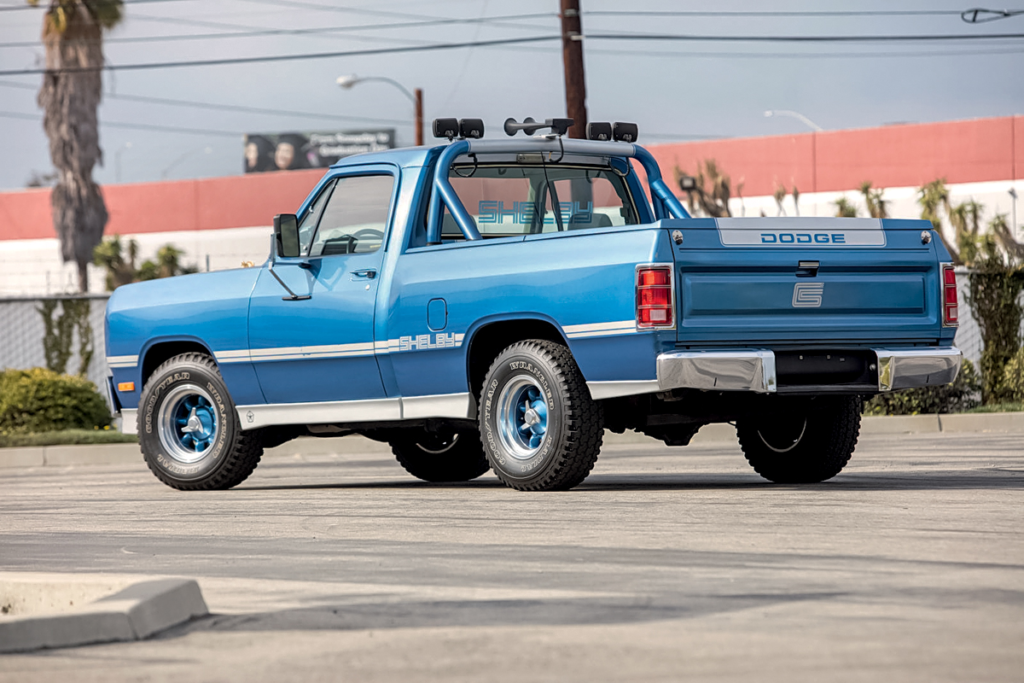
Yet, the true technical battle for the title of the ultimate pickup manufacturer between Ford and Dodge began in the 1990s.
Ford was the first to draw the bowstring. By 1992, the ninth generation of the F-series pickups had been released. A year later, the F-150 model welcomed its first sporty version, the F-150 SVT Lightning (“Lightning” for short). The Windsor V8 engine received aluminum cylinder heads, an intake manifold, and camshafts from the current Mustang Cobra model, resulting in 240 hp of power and 460 Nm of torque. A reinforced driveshaft and a high-traction differential enabled the rear-wheel-drive pickup to accelerate from 0 to 60 mph in a passport time of 7.2 seconds, reaching a maximum speed of 190 km/h.

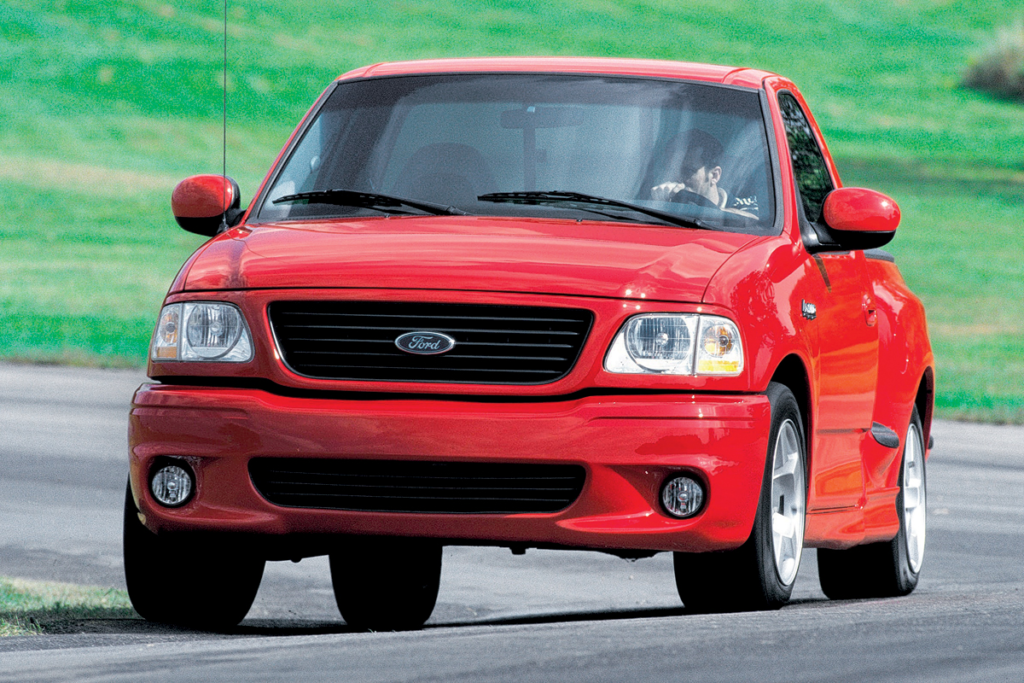
Five years later, Dodge countered with the Ram 1500 SS/T model in 1997, a road version of the pace car for the famous Indy 500 race. The 5.9-liter V8 engine produced 245 hp, and thanks to short gear ratios, it promised a 0 to 60 mph acceleration time of 6.9 seconds. The new version of Ford’s “Lightning,” built on the basis of the next-generation F-150 model in 1999, featured a Triton 5.4 engine with an aluminum block and a supercharger. Power jumped to 360 hp, but reliability issues also arose. By 2003, SVT had redesigned the construction based on a cast iron block, along with increasing power. The result was the new Lightning, which could accelerate from 0 to 60 mph in 5.2 seconds and reach a speed of 235 km/h.
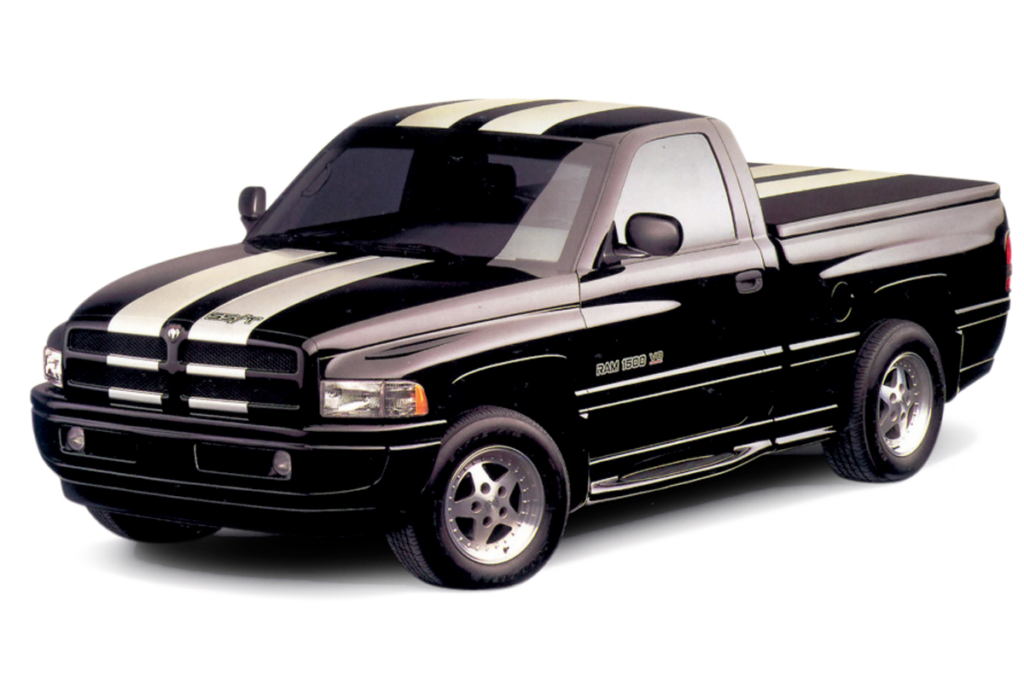
These achievements seemingly struck a nerve with the folks at Dodge, as the appearance of the wild Ram 1500 SRT-10 in 2004 cannot be explained otherwise. Ingeniously, they fit a V10 8.3 engine from the Viper supercar under its hood, featuring an aluminum block and cast iron sleeves. This engine churned out 500 hp and 712 Nm of torque, tamed only by the Viper’s Tremec T-56 manual transmission. An enhanced Dana 60 rear axle was mounted. The sprint to 60 mph took only 5.6 seconds, and the top speed was 249 km/h, an official world record for production pickups. Checkmate?
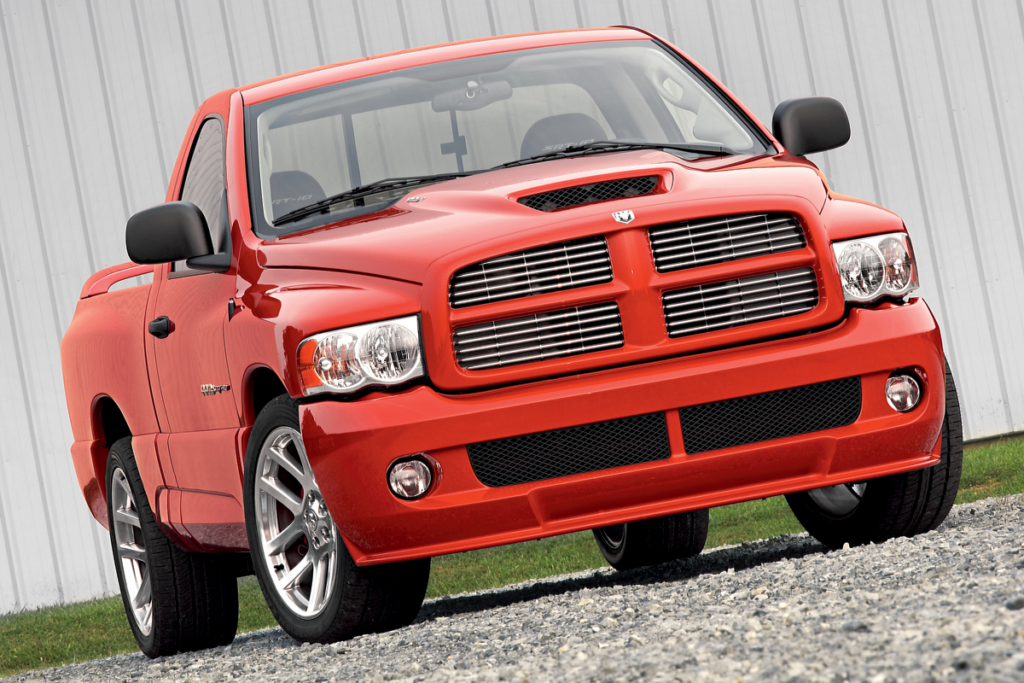
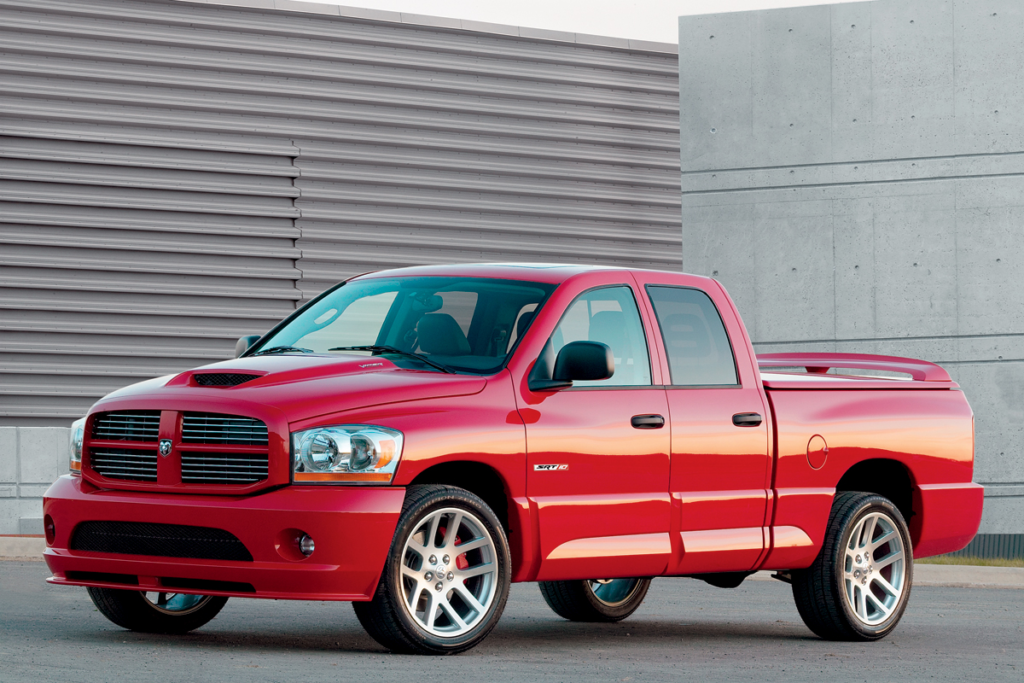
Whatever the case, since then, Ford hasn’t built any more high-speed road pickups. The name “Lightning” was revived only in the latest generation of the F-150 model, being passed on to its electric version. However, in 2010, the first F-150 SVT Raptor was introduced, with a focus on off-road capability. Initially, it was equipped with a 340 hp 5.4-liter V8 engine, later upgraded to a 6.2-liter V8 engine producing 411 hp. This version featured an extended track, reinforced suspension with adjustable Fox Racing shock absorbers offering three levels of stiffness.

In its next generation in 2017, the Raptor bid farewell to the V8, adopting a 510 hp twin-turbocharged V6 engine, an even wider track, and a full-size double-row cabin. Meanwhile, the Fiat Chrysler Group rebranded Ram as an independent brand, now operating under the Stellantis alliance. They unveiled the Ram Rebel TRX concept truck with a 575 hp Hemi V8 engine and aggressive 37-inch tires. This concept paved the way for the production Ram 1500 TRX pickup with a 711 hp engine, introduced in 2020.
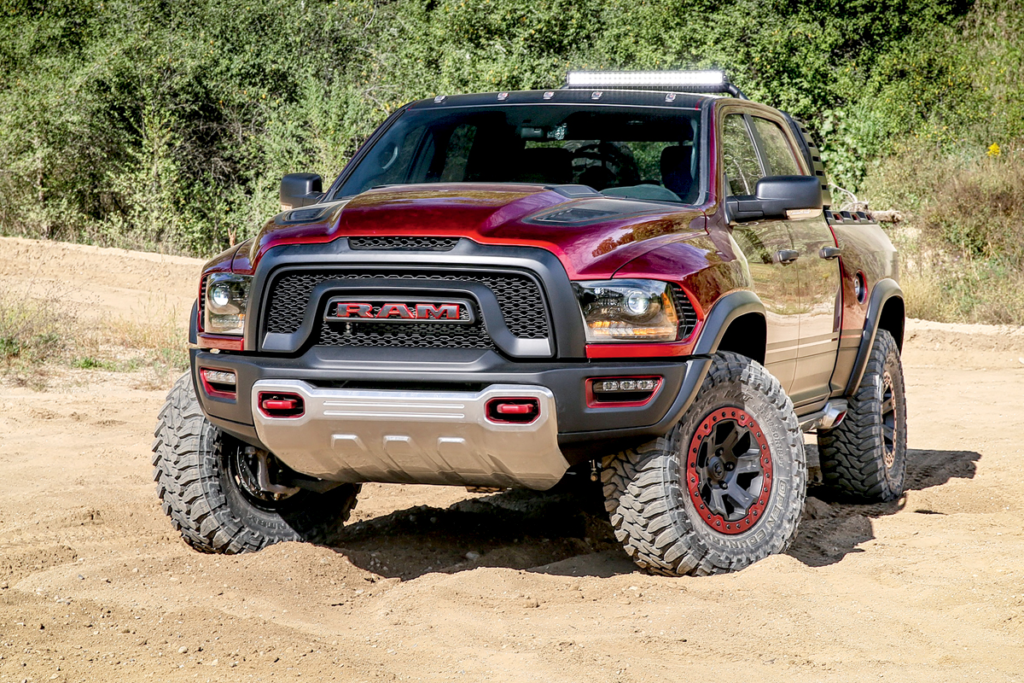
One might wonder, why this renewed arms race in light of the eco-conscious future? However, Ford once again embraced the challenge. In the latest Raptor generation, a new R version emerged, sporting a V8 engine that boasts an impressive 710 hp. The question now is, how will Ram respond this time?
Photo: Dmitry Pitersky
This is a translation. You can read an origianl article here: Пикапы Юрского периода. Ford F-150 Raptor или Ram 1500 TRX? Тест на полигоне

Published August 23, 2023 • 61m to read


